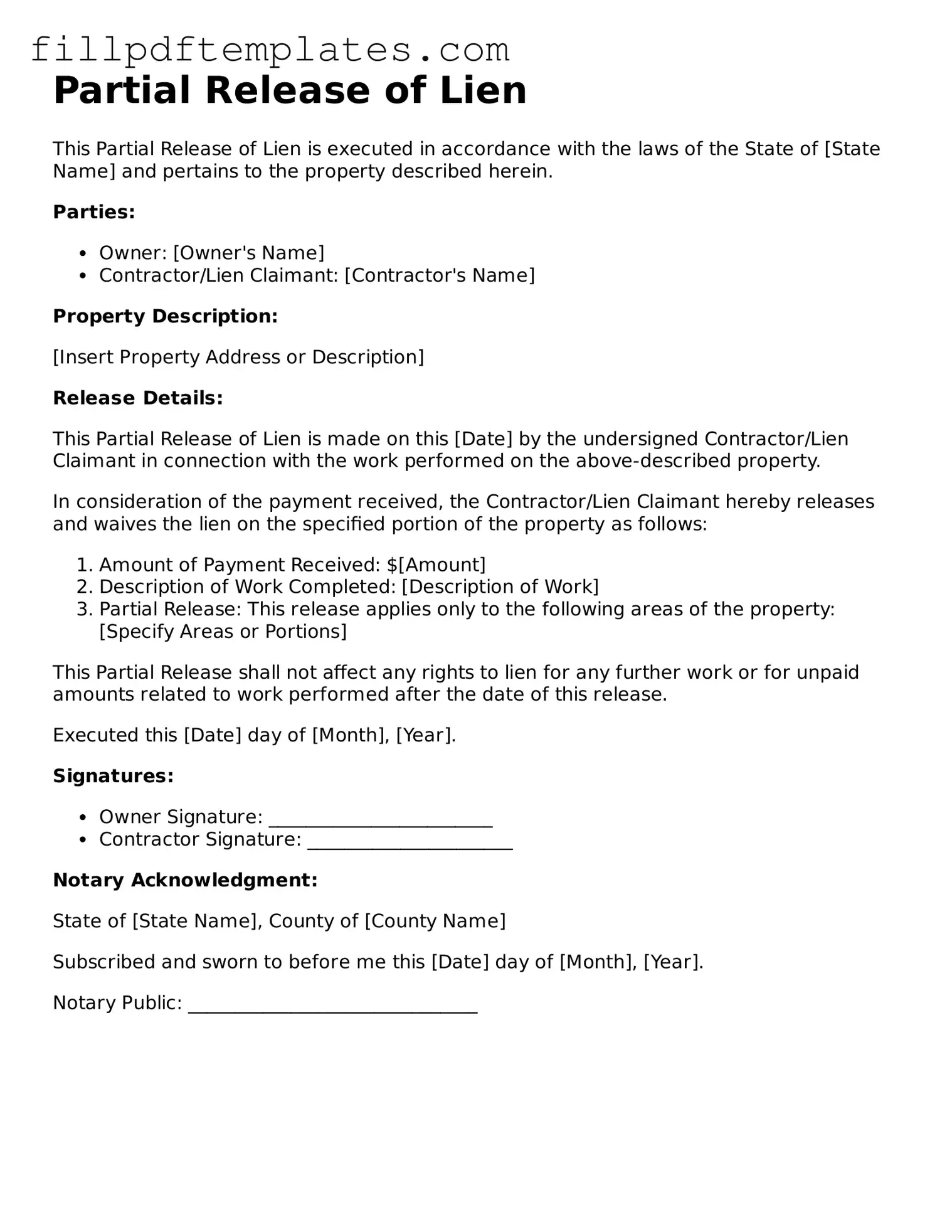Partial Release of Lien
This Partial Release of Lien is executed in accordance with the laws of the State of [State Name] and pertains to the property described herein.
Parties:
- Owner: [Owner's Name]
- Contractor/Lien Claimant: [Contractor's Name]
Property Description:
[Insert Property Address or Description]
Release Details:
This Partial Release of Lien is made on this [Date] by the undersigned Contractor/Lien Claimant in connection with the work performed on the above-described property.
In consideration of the payment received, the Contractor/Lien Claimant hereby releases and waives the lien on the specified portion of the property as follows:
- Amount of Payment Received: $[Amount]
- Description of Work Completed: [Description of Work]
- Partial Release: This release applies only to the following areas of the property: [Specify Areas or Portions]
This Partial Release shall not affect any rights to lien for any further work or for unpaid amounts related to work performed after the date of this release.
Executed this [Date] day of [Month], [Year].
Signatures:
- Owner Signature: ________________________
- Contractor Signature: ______________________
Notary Acknowledgment:
State of [State Name], County of [County Name]
Subscribed and sworn to before me this [Date] day of [Month], [Year].
Notary Public: _______________________________
